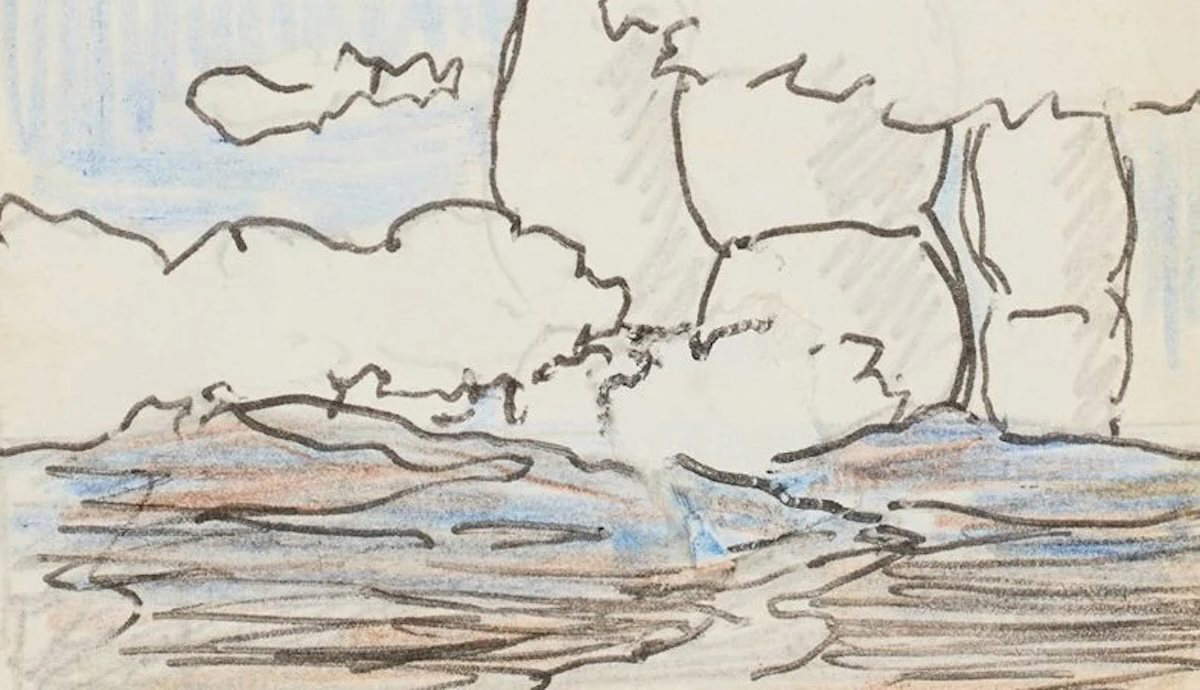
Newly deciphered text from an ancient papyrus scroll details the final hours and burial place of Plato, a foundational figure in Western philosophy. The centuries-old text reveals that the Greek philosopher was listening to music before he died. The scroll was preserved beneath layers of volcanic ash after the eruption of Mount Vesuvius buried Herculaneum and neighboring Pompeii and 79 C.E. It was rediscovered in 1750 but was considered illegible until now.
Plato’s Final Moments and Burial Site Were Previously Unknown

The ancient papyrus scroll, titled “The History of the Academy,” was penned by Philodemus of Gadara, an Epicurean philosopher who studied in Athens. It discusses the life and accomplishments of Plato, including a previously unknown narrative of Plato’s final hours. The text describes how Plato, suffering from a severe fever on his deathbed, listened to music played on a flute by an enslaved Thracian woman. According to a written dialogue in the text, Plato had just enough energy to critique the musician for her lack of rhythmic abilities. He died soon after in Athens around 348 or 347 B.C.E. at age 80 or 81.
Plato’s burial site was also revealed in the deciphered text. It was previously known that Plato was laid to rest somewhere at the Academy of Athens, the world’s oldest university, which he founded. The deciphered text suggests the Greek philosopher was buried in his designated garden at the academy, a private area created for the Platonic school. Additionally, the text explains that Plato was sold into slavery between 404 and 399 B.C.E. Historians previously believed that this occurred in 387 B.C.E.
New Technology Used to Decipher Ancient Text

Graziano Ranocchia, a philosopher and researcher at the University of Pisa, and his colleagues used a combination of artificial intelligence and other technological advances to read the ancient papyrus, which belongs to the National Library of Naples. These include infrared and ultraviolet optical imaging, thermal imaging, and tomography. The team has deciphered approximately 30% of the the text on Plato so far, which Ranocchia described as an “extraordinary outcome that enriches our understanding of ancient history.”
Ranocchia further explained, “Thanks to the most advanced imaging diagnostic techniques, we are finally able to read and decipher new sections of texts that previously seemed inaccessible. For the first time, we have been able to read sequences of hidden letters from the papyri that were enfolded within multiple layers, stuck to each other over the centuries, through an unrolling process using a mechanical technique that disrupted whole fragments of text.”
The Plato Papyrus Was Considered Illegible For Centuries

“The History of the Academy” was discovered in 1750. The papyrus scroll about Plato was carbonized and buried beneath layers of ash in a grand villa in Herculaneum, an ancient Roman city near Pompeii that was destroyed by the eruption of Mount Vesuvius. This particular dwelling is known as the Villa of the Papyri, named for its uniquely large library of preserved papyri scrolls. Since their discovery in the 18th century, scholars have unsuccessfully attempted to decipher the words on these scrolls, including the text on Plato. The application of new technologies to read these ancient texts is still in its beginning stages, the full impact of which will take years to unfold, according to researchers.









